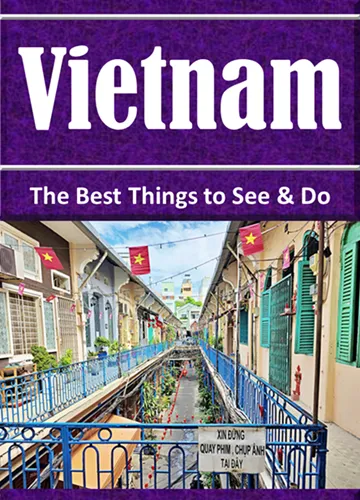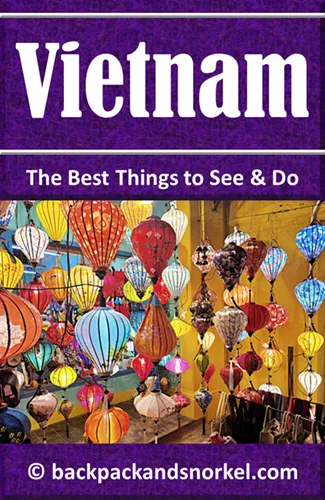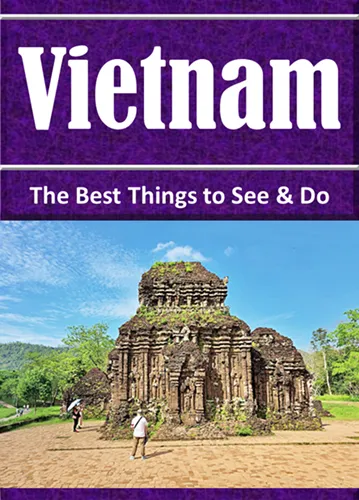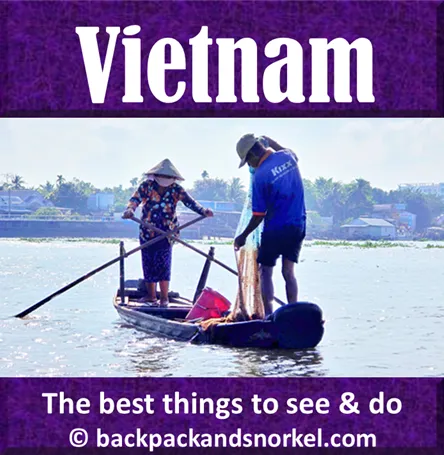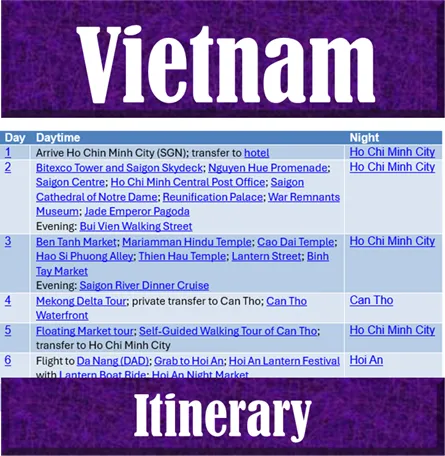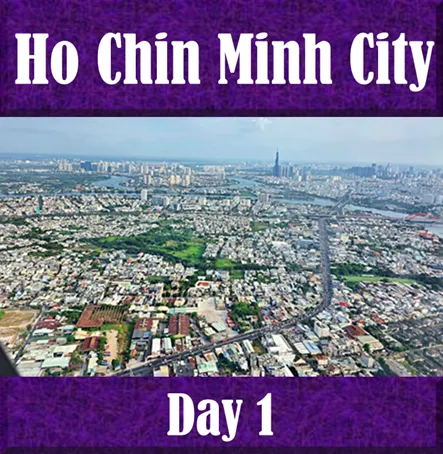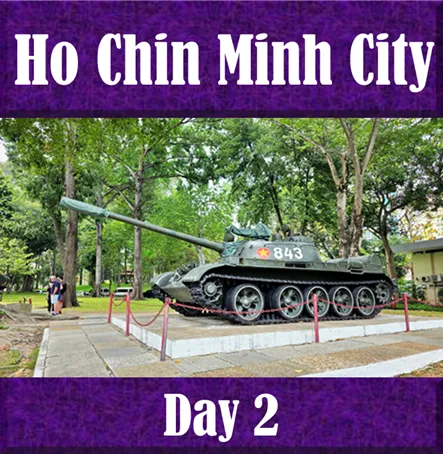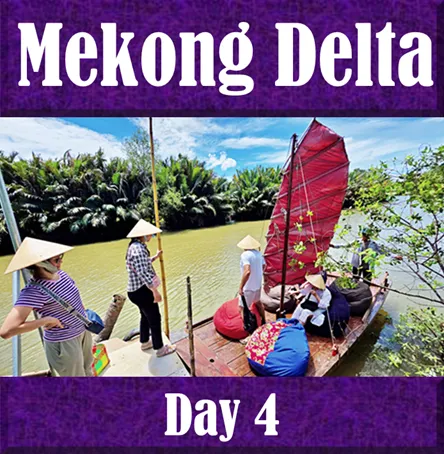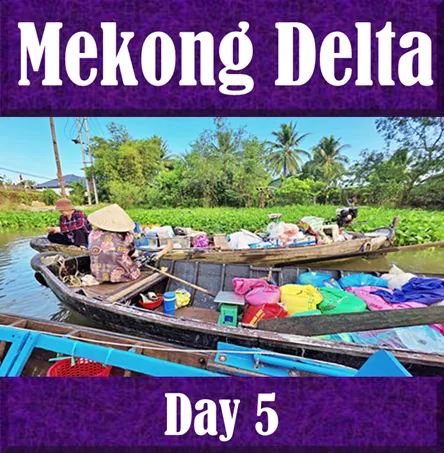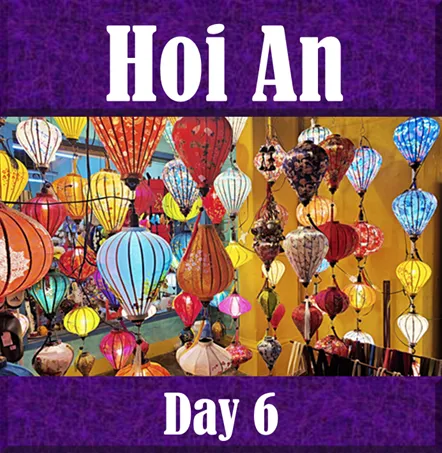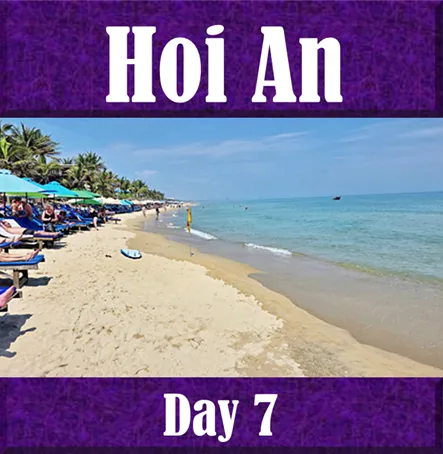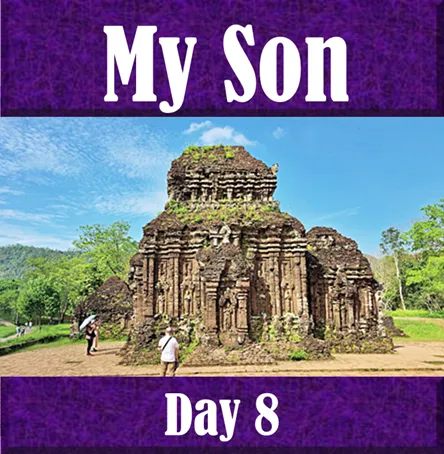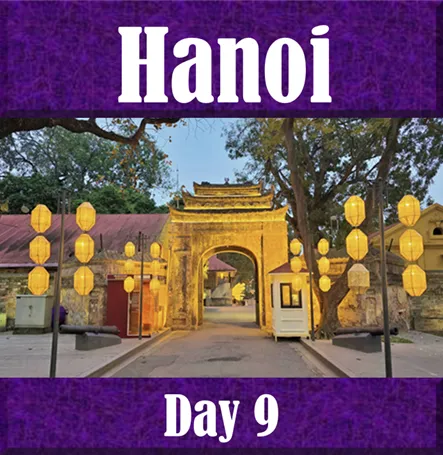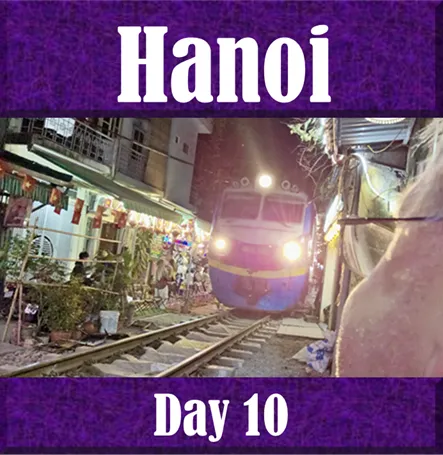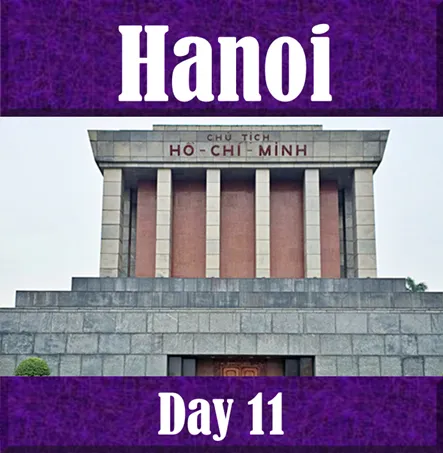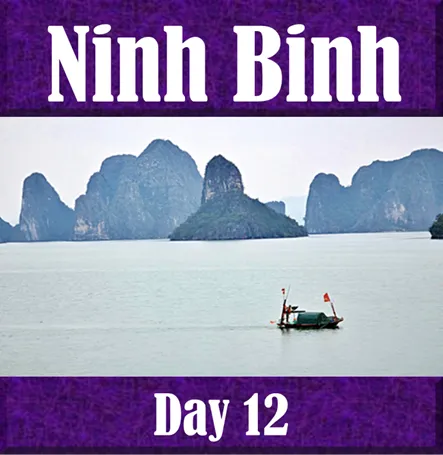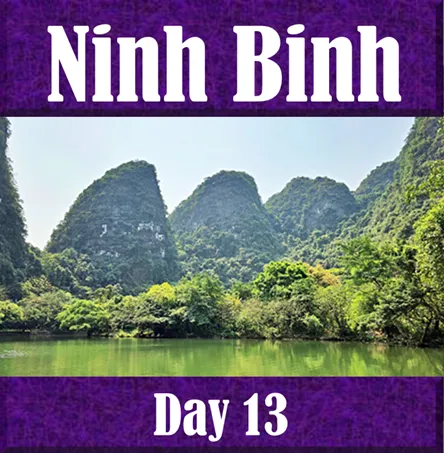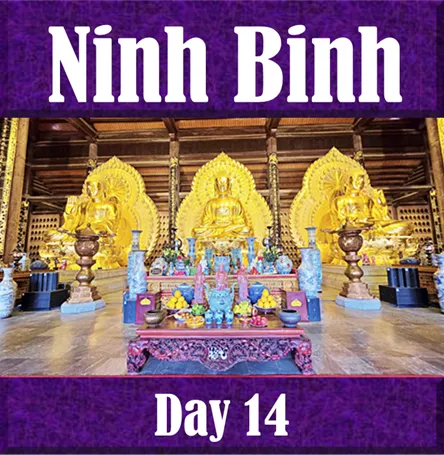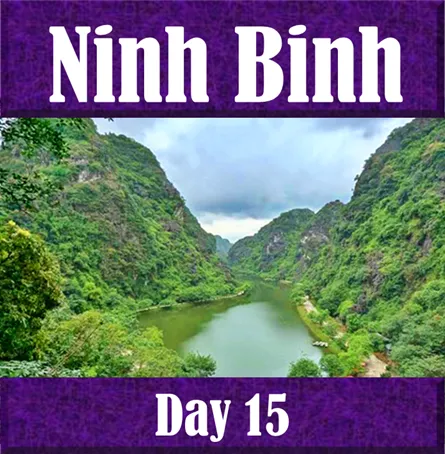Binh Tay Market: Guide to Cholon's Authentic Wholesale Hub & Chinese-Vietnamese Cuisine | Vietnam Purple Travel Guide
(map, reviews)
This is Premium Content! To access it, please download our
Backpack and Snorkel Purple Travel GuideBinh Tay Market offers a colorful and historic alternative to the more touristy Ben Thanh Market. Known locally as Chợ Lớn Market, Binh Tay is a sprawling wholesale hub where Vietnamese and Chinese cultures intertwine, and daily life unfolds amid stalls stacked with spices, silks, dried goods, kitchenware, and just about everything in between.
Whether you are on the hunt for souvenirs, exploring Vietnamese-Chinese heritage, or simply soaking in the sensory overload of a bustling bazaar, Binh Tay Market delivers a truly authentic Saigon shopping experience.
History of Binh Tay Market
Binh Tay Market was originally constructed in the 1880s by a wealthy Chinese businessman named Quách Đàm (Guo Tan in Mandarin), who was a prominent figure in the Chinese immigrant community in Saigon. The current building, however, dates back to 1928, when it was rebuilt in a French colonial style with strong Chinese architectural influences.
Quách Đàm’s contribution to the market is memorialized with a bronze statue of him placed in the central courtyard (the original has been moved to the Fine Arts Museum, and a replica now stands in its place). The market was and still is a vital economic engine for the Hoa (ethnic Chinese) community in Saigon, serving as the main wholesale distribution point for goods in southern Vietnam.
Architectural Features
One of the most unique aspects of Binh Tay Market is its blend of French colonial architecture and traditional Chinese design elements:
Ornate tiled roofs with curved eaves and dragon motifs
Clock tower with a classic French design
Central courtyard for air circulation and religious altars
Interior lanterns and wooden beams xxx
Four symmetrical entrances, symbolizing openness and prosperity
The combination of functional design and cultural symbolism makes the market as visually interesting as it is practical.
What You Will Find at Binh Tay Market
Binh Tay Market is primarily a wholesale market, meaning most stalls cater to vendors and businesses. However, visitors are welcome to explore and shop. Here is what you can expect:
Products
Dried fruits, nuts, and seafood
Vietnamese spices, herbs, and teas
Incense, lanterns, and prayer items
Traditional Chinese medicine
Household goods, ceramics, and cookware
Fabric and textiles at wholesale prices
Fresh produce and street food stalls in the rear market
Even if you are not buying in bulk, most vendors will sell small quantities, and haggling is part of the fun!
Local Street Food
At the back of the market, you will find a diverse street food section with stalls serving classic Chinese-Vietnamese dishes.
This food court is a great place to experience the culinary fusion that defines Chợ Lớn cuisine.
Practical Information for Visitors
Opening Hours: 6:00 AM – 6:00 PM daily (food court operates earlier in the morning)
The market is busiest in the early morning hours when deliveries are made and business is at its peak. For the best experience, visit between 7am and 11am
Entry Fee: Free; bring cash for purchases (preferably small bills)
Here are some photos that we took:
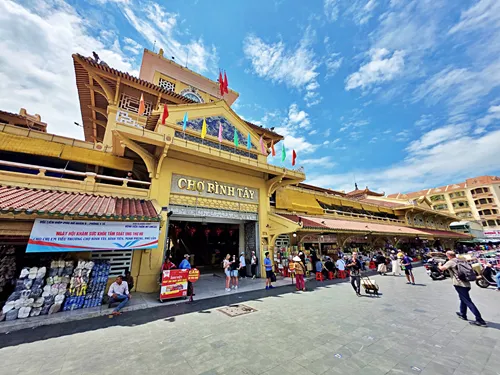
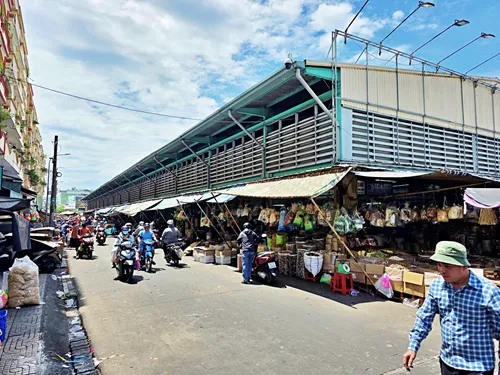
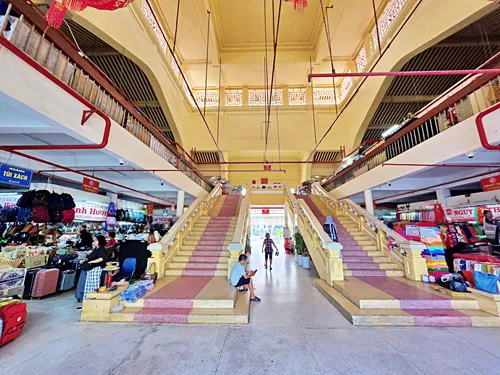
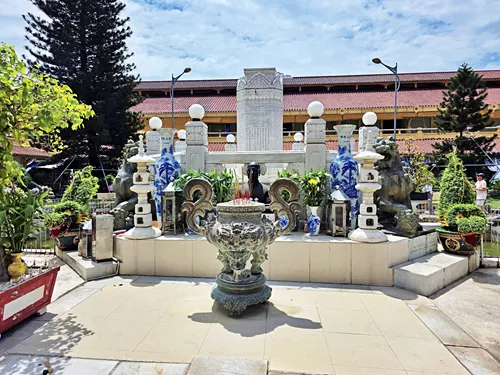
Here at Backpack and Snorkel Travel Guides, we promote self-guided walking tours.
But we realize that not everybody likes to walk by themselves in a foreign city. So, just in case that you rather go with ab guide: NO PROBLEM! Please see the GuruWalk and Viator tours below.
free GuruWalk tours
paid Viator tours
Where do you want to go now?
Author: Rudy at Backpack and Snorkel
Bio: Owner of Backpack and Snorkel Travel Guides. We create in-depth guides to help you plan unforgettable vacations around the world.
Other popular Purple Travel Guides you may be interested in:
Like this Backpack and Snorkel Purple Travel Guide? Pin these for later:

